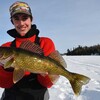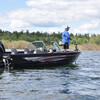
The Tigers Of Sunset Country

The tiger musky. Just the thought of it amazes most anglers. The most picturesque of all freshwater fish. With the beautiful tiger-like stripes and vivid contrast of the colours, anglers from all over the musky range come to Sunset Country with one goal. To check the elusive tiger musky off the bucket list.
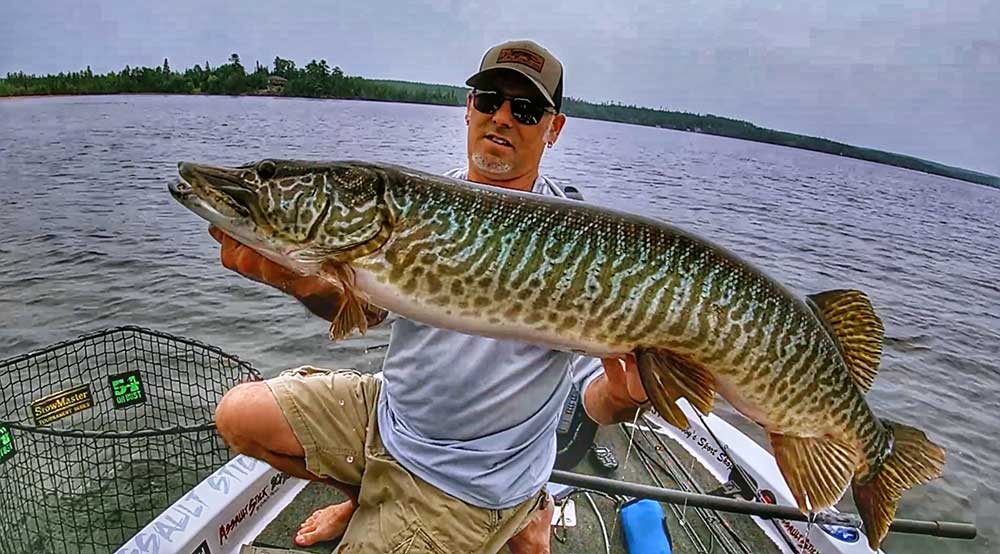
What Is A Tiger Musky?
The tiger, or hybrid musky is a natural cross-breeding of a Northern Pike and Musky, resulting in a sterile offspring, the tiger musky. Well known due to their distinctive tiger stripe markings.
Sunset Country Muskies
All over Sunset Country the lakes are full of muskies but many anglers fish these waters every year and never catch a tiger musky. While our area is known to produce tiger muskies, not every lake is going to have a fishable population of hybrids.
I am fortunate to fish all the great tiger musky waters around Sunset Country. So prevalent is the tiger musky that ten to twenty percent of my annual catches will be tigers. Visiting Sunset Country with the hope of catching a tiger? Ask the local lodge owners about tiger muskies in their lakes, and ask at local tackle and bait shops. Search social media. To catch a tiger, you have to be on water that has an abundance of tigers.
What To Expect?
Tiger muskies are generally shorter and stockier than a musky. The head seems large compared to the body and the tail is often stubby or short. The average size in Northwestern Ontario is 28 inches to 38 inches, fish over 40 inches are considered large tigers. Hybrid musky at 45 inches or larger are considered true trophy fish. Many musky anglers would consider a 45-inch tiger the equivalent of a 50-inch musky, only harder to catch.
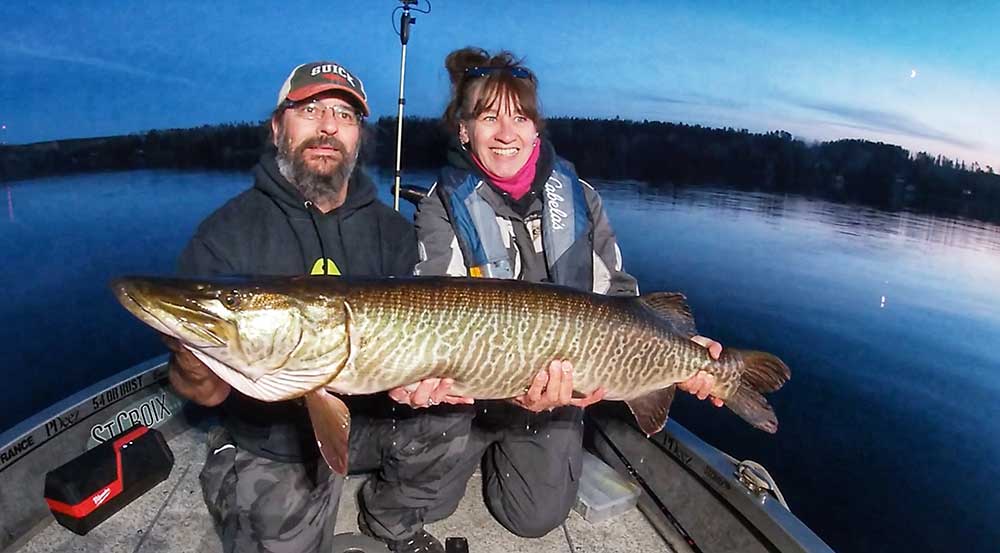
You Found A Lake, Now What?
Tiger muskies act much more like the parent pike than a pure-bred musky. Meaning, smaller tigers will often be in areas you would consider good habitat for smaller, juvenile pike. Shallow weedy bay, protected rock shoals etc. Smaller tigers can be targeted in the same way as pike in these areas, spoons, spinnerbaits and small bucktails are effective.

Larger tigers act like large northern pike. Most pike anglers will tell you the largest pike in any body of water will be out in the basin, close to deep water. This is where we find large tigers in open water. One area we consistently find big tigers is current areas. Creek mouths, river mouths or outflow areas with lots of current always seem to hold plenty of bait and tiger musky seem to enjoy those areas.
Aggressive By Nature
Aggressive and relentless and without the need to reproduce, (due to being sterile), tiger muskies eat often and grow fast. Growth rates on average are nearly twice as fast as pure-bred muskies. In lake systems with tigers, the tiger musky will be much more aggressive than the pure-bred muskies. This past season, using forward-facing sonar we were able to see this in real-time. In areas with multiple fish on the sonar, the fish that were the most aggressive towards our baits were almost always tigers.

These larger hybrids, while generally more aggressive, are harder to find in any given body of water. Fishing the aforementioned areas, deep current areas seem to be our best-producing area. With the addition of forward-facing sonar technology, we have been able to find bait in deeper water, and subsequently, muskies and tigers. Baits that excel in deeper applications are key to success. Red October 10-inch monster tube, Lake X Toad, deep diving crankbaits and classic dive and rise baits like the Suick Thriller.
Fall fishing continually produces trophy tiger muskies for us, year after year. The aggressive nature of the tiger seems to really serve them well during the fall whitefish and cisco spawn. Using live bait and sucker rigs during the late October bait fish spawn always puts quality tigers in the net. So much so that if you are truly looking for a trophy tiger, you need to book a fall fishing trip in Sunset Country! Trolling in the fall has produced some of the largest tigers for us as well, again find the bait fish and the aggressive tiger will always be close by.
Water, Water, Everywhere
Where to start in Sunset Country? If the goal of the trip is a tiger musky, look to the lakes with a history of tiger musky catches. Almost every lake that has a population of both pike and musky in Sunset Country can potentially see spawning overlap. That being said, not every lake will have a truly fishable population of tiger muskies.
In my experience, your best shot at a tiger musky will be the Indian Lake Chain, Canyon Lake, Cedar Lake and Perrault Lake. Other lakes such as Ord, Thaddeus, Wabigoon, Cliff and Eagle Lake will produce tigers but they are just not caught as often.
I posted a video on this subject on our 54 or Bust YouTube channel, find it here:
The Best TIGER MUSKY Lakes In Northwestern Ontario
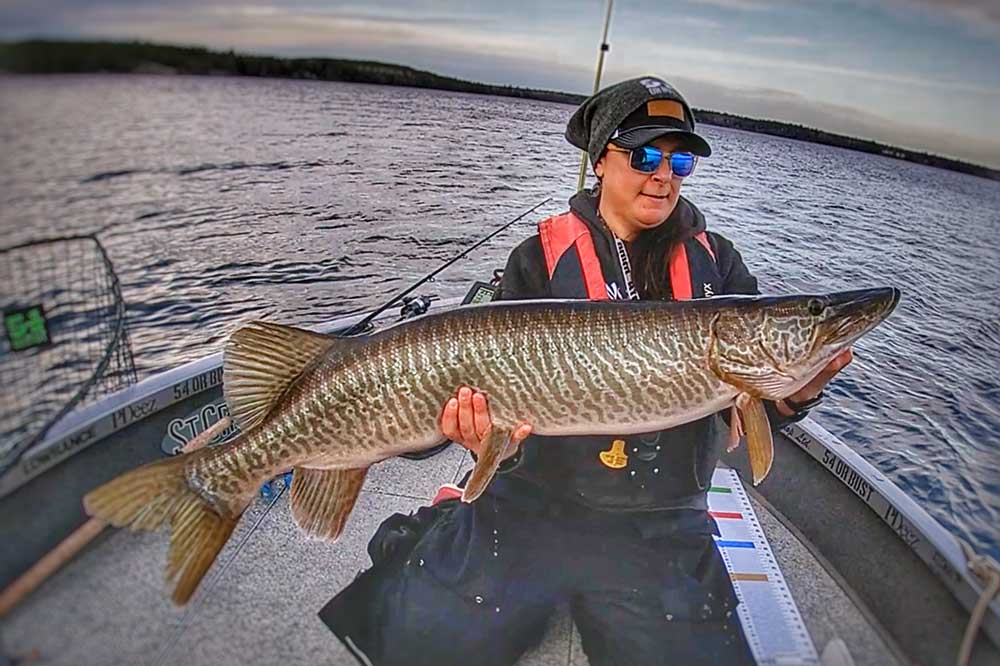
Muskies are notoriously known as the fish of ten thousand casts. For good reason, they do not come easy. Tiger muskies are even harder to catch. Many musky anglers will fish their entire life and never catch one. Many lakes in the United States are stocked with tiger muskies, and they are still tough to catch.
In Northwestern Ontario no stocking of muskies occurs. All tiger muskies are the result of natural cross-breeding. During late springs the spawn of the northern pike and musky will overlap, resulting in cross-breeding. It varies from year to year and is very much related to weather patterns. Currently, the population of fishable tiger muskies is very high, but this peak will change over time. Right now is a perfect time to target muskies, and specifically the tiger musky in Northwestern Ontario.
Fishing in Sunset Country will give many anglers the chance to check the tiger musky off the Bucket List.
Recommended Articles
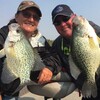
Pine Sunset Lodge

Best WhiteFish Tactics
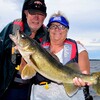
Thirst to be First

Paradise Cove Resorts
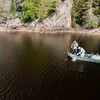
Ultimate Drive-to Smallmouth Bass Fishing
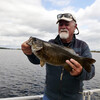
Reflections of Borden Lake

Fall Bass Class
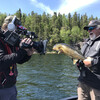
Ontario’s Fishing Gems: Algoma and Sunset Country
Awesome Algonquin
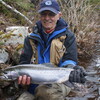
Steelhead Fever

A Whole Lota Lovin'
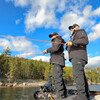
Against the Grain

Cast Into the Heart of a Walleye Paradise

Musky Mayhem in the Kawarthas

5 Places to Shore Fish

The Joy of Fishing

Angling the Missinaibi

Magical Montreal River Bass

Bobber-Whacky Magic








